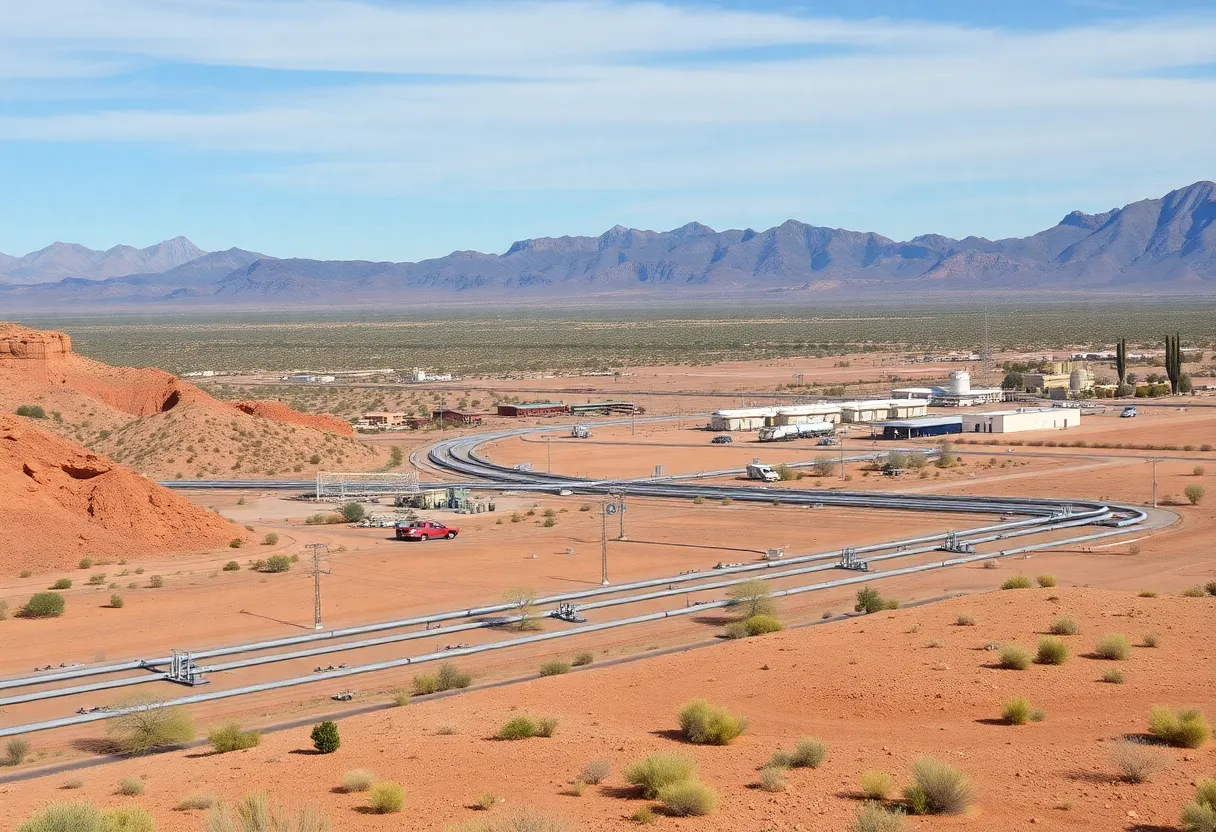News Summary
Arizona is taking significant steps to expand its natural gas supply infrastructure through a collaboration between Arizona Public Service (APS) and the Transwestern Pipeline’s $5.3 billion expansion project. This initiative aims to meet rising energy demands driven by large load customers and data centers. With a planned capacity increase of 1.5 billion cubic feet per day, the project is essential for the state’s energy reliability, despite criticism from environmental advocates concerning greenhouse gas emissions.
Arizona is set to enhance its natural gas supply infrastructure as Arizona Public Service (APS) and other utilities negotiate capacity from the Transwestern Pipeline’s $5.3 billion expansion project. This initiative aims to meet the increasing energy demand, particularly from large load customers and data centers within APS’s service area.
APS currently has 4.5 gigawatts (GW) of committed large load customers awaiting connection and an additional 20 GW of potential customers in its interconnection queue. The recent surge in demand has prompted APS to collaborate with the Salt River Project (SRP) to secure natural gas deliveries via Transwestern’s Desert Southwest expansion project, which will facilitate the transfer of natural gas from the Permian Basin in Texas directly to Arizona.
The Transwestern Pipeline, measuring 2,590 miles, will be expanded to increase capacity by 1.5 billion cubic feet per day (Bcf/d). The construction phase will involve laying down 516 miles of a 42-inch diameter pipeline and adding several compressor stations across Arizona, New Mexico, and Texas. The expansion is slated for completion by late 2029, as stated by Energy Transfer, the parent company of Transwestern.
As the anchor customer, APS will use the pipeline to provide gas to gas-fired power plants linked to its developments, especially those aimed at supporting planned data centers that are critical for the state’s energy distribution. Other utilities, including Tucson Electric Power (TEP), UniSource Energy Services, and the City of Mesa, are also engaging in negotiations to secure their share of the expanded capacity
.
Currently, all interstate gas pipelines that serve Arizona are fully committed, making the Transwestern expansion crucial for the state’s energy future. The project not only offers increased capacity but is also deemed essential to ensure regional energy reliability amidst a growing population and escalating demand for electricity.
APS has recently experienced peak demand records, which reached approximately 8.5 GW on July 9, 2023. The utility anticipates an annual electric sales increase of 4% to 6% through 2027, necessitating significant investments in energy infrastructure. From 2025 to 2027, APS plans to invest around $2.7 billion in generation facilities and is pursuing proposals for an additional 2 GW of power supply.
Interestingly, APS’s energy strategy has undergone some revisions; the utility has shifted its carbon emissions target to become carbon neutral by 2050 instead of achieving zero carbon emissions, reflecting the rapid load growth and corresponding pressures on its operational capabilities. Last year, around 45% of Arizona’s electricity came from gas-fired power plants.
While the Transwestern expansion project is positioned to support the state’s energy needs, it has drawn criticism from environmental advocates concerned about the dependency on natural gas, which contributes to greenhouse gas emissions. Furthermore, APS’s agreement with Transwestern does not account for fuel costs, raising concerns among consumer advocates regarding potential price volatility in the future.
Despite mixed reactions, utility leaders regard this pipeline project as a vital component in fortifying Arizona’s energy infrastructure to accommodate expanding demands, particularly from the data center sector. The construction of the pipeline is scheduled to begin in mid-2028, following necessary regulatory reviews, including environmental impact assessments, to ensure compliance and sustainability of the project.
The open season for remaining pipeline capacity is anticipated to commence shortly, with expectations of full subscription and potential further expansions under consideration by Transwestern utilizing 46-inch diameter pipes.
Deeper Dive: News & Info About This Topic
- Utility Dive: Arizona Utilities APS & SRP Gas Pipeline
- Wikipedia: Natural Gas Pipeline
- AZCentral: New Natural Gas Pipeline for Arizona Utilities
- Google Search: Arizona utilities natural gas pipeline
- AZ Capitol Times: APS Joins Gas Pipeline Expansion
- Google Scholar: Arizona natural gas infrastructure
- Power Engineering: Arizona Utilities Lock In Fuel Supply
- Encyclopedia Britannica: Natural Gas
- Axios: APS Reverses 2050 Clean Energy Goal

Author: STAFF HERE PHOENIX WRITER
The PHOENIX STAFF WRITER represents the experienced team at HEREPhoenix.com, your go-to source for actionable local news and information in Phoenix, Maricopa County, and beyond. Specializing in "news you can use," we cover essential topics like product reviews for personal and business needs, local business directories, politics, real estate trends, neighborhood insights, and state news affecting the area—with deep expertise drawn from years of dedicated reporting and strong community input, including local press releases and business updates. We deliver top reporting on high-value events such as the Waste Management Phoenix Open, Cactus League Spring Training, and Arizona State Fair. Our coverage extends to key organizations like the Greater Phoenix Chamber of Commerce and Visit Phoenix, plus leading businesses in technology and healthcare that power the local economy such as Intel and Banner Health. As part of the broader HERE network, including HERETucson.com, we provide comprehensive, credible insights into Arizona's dynamic landscape.





